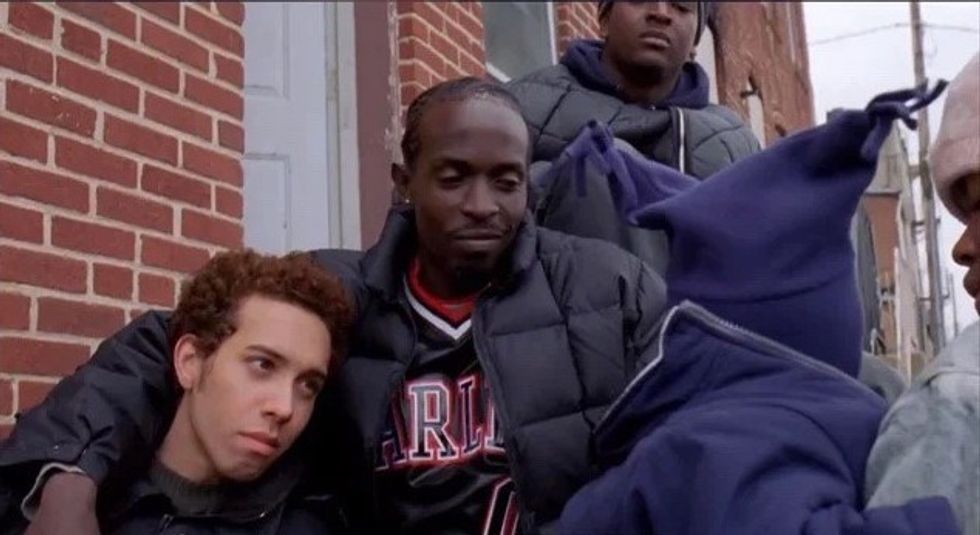
When you sit down to watch a film or TV show, you’re not watching real life. but there are many writers and directors who spend a great deal of time trying to get you to believe it is.
Sure, we want people to buy into our worldbuilding, but there’s also a whole group of people trying to make movies and TV shows steeped in realism.
In the vast realm of filmmaking and television, the concept of realism holds a special place. It’s an artistic approach that strives to depict the world as it truly is, unfiltered and unembellished.
So how would you define these concepts, are what are some examples of them across film and TV?
Let’s dive into realism together.
Realism Definition in Film and TV

Realism in film and TV refers to an artistic approach and narrative style that aims to represent life, characters, settings, and events as closely as possible to their real-world counterparts.
It emphasizes authenticity, avoiding excessive stylization, melodrama, or artificiality in favor of depicting the complexities, nuances, and everyday aspects of human existence.
The goal of realism is to create a sense of familiarity, relatability, and emotional resonance with the audience, allowing them to connect with the on-screen world on a personal and genuine level.
How to Add Realism to Your Project

Realism isn’t just about the story feeling grounded. It has to do with the way you shoot and the kinds of stories you tell.
In a realistic film or TV show, the portrayal of characters’ emotions, behaviors, and interactions often mirrors real-life experiences.
Authentic locations, naturalistic acting, and dialogue that resembles natural conversation are frequently employed to enhance the genuine feel of the narrative.
Realism may extend to production design, cinematography, and storytelling techniques, all of which work together to present a world that feels recognizable and familiar.
Here’s an important thing to remember: This isn’t a documentary.
Realism is not a strict replication of life but rather an interpretation of it through the lens of your artistic expression. Filmmakers and TV creators may still make creative choices and adaptations to enhance the storytelling while maintaining the core essence of authenticity.
Understanding Realism in Film and TV

Realism in film and TV is an approach that seeks to portray life without excessive stylization or dramatization. It’s an attempt to capture the mundane, the ordinary, and the authentic aspects of human existence and hopefully make them entertaining and meaningful to the audience.
The goal is to elicit an emotional response from the audience by connecting them to characters and situations they can recognize from their own lives.
It’s a way to connect with the watchers.
The History of Realism in Film and TV

So, where did realism come from in film and television?
The roots of cinematic realism can be traced back to the early 20th century, with pioneers like Italian neorealists and French poetic realists.
Italian neorealism, for instance, emerged in the aftermath of World War II, focusing on the struggles of ordinary people in a war-torn country. Filmmakers like Roberto Rossellini and Vittorio De Sica shot on location using non-professional actors, blending reality and fiction to create impactful stories.
In France, poetic realism embraced a more lyrical approach while still depicting the harshness of everyday life. As those movies spread across the globe, people began to imitate them.
This spread of a new way to make film and TV has continued to evolve over the decades since.
How to Identify Realism in Film and TV

To achieve realism in your own work, you should know how to identify it in the stuff you’re watching. Here are some key techniques that contribute to the realistic portrayal:
- Naturalistic Acting: Encouraging actors to deliver performances that mirror real-life emotions and reactions. This often involves improvisation and eschewing traditional theatrical styles.
- Authentic Locations: Filming on actual locations, even if they are imperfect or less visually appealing, adds an element of truth to the setting.
- Handheld Camera: Using handheld cameras or techniques like “shaky cam” can create a documentary-like feel, immersing the audience in the action.
- Minimalist Production Design: Stripping away elaborate sets and props in favor of a more minimalistic approach can emphasize the reality of the environment.
- Natural Lighting: Utilizing natural lighting sources, even if they are less flattering, can enhance the authenticity of scenes.
- Conversational Dialogue: Crafting dialogue that mirrors real conversations, complete with interruptions, pauses, and overlaps, adds to the authenticity.
Realism Examples in Film and TV

Alright, let’s dive into some examples in film and TV. There are of, course, whole genres that rely on realism, like mumblecore. I’d say that realism is more of a style than a genre in general as well.
Anyway, here are some films and TV shows that rely on realism to tell their stories:
1. Bicycle Thieves (1948)
This Italian neorealist film directed by Vittorio De Sica is a quintessential example of realism in cinema. Set in post-World War II Italy, the film follows a man and his young son as they search for a stolen bicycle, which the father needs for work. The film’s use of non-professional actors, authentic locations, and a focus on the struggles of everyday life epitomizes the neorealist approach to realism.
2. Boyhood (2014)
Directed by Richard Linklater, Boyhood stands out as a modern example of realism in filmmaking. Shot over 12 years, the film follows the life of a young boy as he grows into adulthood. The passage of time is captured authentically as the same actors age naturally throughout the production, giving the audience a genuine sense of the characters’ development.
3. The Wire (2002-2008)
This acclaimed television series created by David Simon is known for its realistic portrayal of life in Baltimore, Maryland. The show delves into various facets of the city, including law enforcement, education, politics, and the media, highlighting the complexities and challenges of urban life. The use of non-professional actors, authentic locations, and a focus on systemic issues contribute to its realistic depiction.
4. Amour (2012)
Directed by Michael Haneke, Amour is a stark portrayal of the challenges that come with aging and illness. The film depicts an elderly couple’s struggle as one of them faces physical and mental decline. Through its minimalist production design, naturalistic acting, and unflinching exploration of difficult topics, the film creates an emotionally raw and realistic experience.
5. Friday Night Lights (2006-2011)
Based on the book and film of the same name, this television series follows a high school football team and its community in a small Texas town. The show’s emphasis on character development, authentic sports sequences, and the challenges faced by both players and residents captures the spirit and struggles of small-town life in a genuine way.
6. Winter’s Bone (2010)
This independent drama, directed by Debra Granik, tells the story of a young woman searching for her missing father in a poverty-stricken rural community. The film’s use of non-professional actors from the region, coupled with its authentic portrayal of the Ozarks, adds to its sense of realism and grit.
7. Fruitvale Station (2013)
Based on the true story of Oscar Grant’s death at the hands of police officers, this film directed by Ryan Coogler is a powerful exploration of racial injustice and police brutality. By employing naturalistic acting and presenting events in a documentary-like manner, the film brings a heightened sense of realism to a tragic real-life event.
8. In the Mood for Love (2000)
Directed by Wong Kar-wai, this visually stunning film portrays the emotional connection between two neighbors whose spouses are having affairs. The film’s deliberate pacing, exquisite cinematography, and nuanced performances capture the subtleties of unspoken emotions, creating a realistic portrayal of repressed desire and longing.
9. Before Sunrise (1995)
Directed by Richard Linklater, Before Sunrise is a romantic drama that follows two strangers, Jesse and Céline, as they meet on a train and spend a single night together in Vienna. The film’s realistic portrayal of their conversations, emotions, and interactions captures the fleeting and spontaneous nature of human connections. Through naturalistic acting and dialogue, the film delves into the complexities of relationships, presenting an intimate and relatable exploration of love and vulnerability.
10. American Honey (2016)
Directed by Andrea Arnold, this road drama follows a group of young magazine sellers as they travel across the American Midwest. The film’s use of non-professional actors and spontaneous, vérité-style cinematography creates an authentic atmosphere that captures the energy and uncertainty of youth on the fringes of society.
Summing Up Realism in Film and TV
Realism in film and TV is more than just a stylistic choice; it’s an artistic approach that aims to capture the essence of human existence. By employing techniques that mirror real life and emphasizing the authenticity of characters and situations, filmmakers and TV creators can create stories that deeply resonate with audiences.
Whether through the lens of Italian neorealism or the handheld cameras of contemporary dramas, realism remains a timeless and compelling facet of visual storytelling.
Author: Jason Hellerman
This article comes from No Film School and can be read on the original site.
